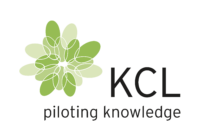Introduction to Microfibrillated Cellulose
Microfibrillated cellulose (MFC) is an advanced material derived from natural sources, specifically from industrial agro sidestreams such as sugar beet pulp. This innovative material is created by removing lignin and hemicellulose from the raw material and then fibrillating it through purely mechanical means. The result is a highly efficient and sustainable material that offers numerous benefits across various industries.
At KCL, we have extensive experience in nanocellulose materials, and our MFC is meticulously designed to meet the requirements of diverse applications. Our process is energy-efficient and boasts a low carbon footprint, making it an environmentally friendly choice for enhancing material efficiency in your products.
In this blog post, we will explore why microfibrillated cellulose is the key to improving material efficiency in your products. We will delve into how MFC enhances material properties, its environmental benefits, and its applications across different industries.
How Microfibrillated Cellulose Enhances Material Properties
One of the primary reasons microfibrillated cellulose is so effective in improving material efficiency is its ability to enhance the strength and stiffness of products. When incorporated into paper products, MFC can significantly increase their durability, allowing for substantial savings in material usage during production. This not only reduces costs but also minimises waste, contributing to a more sustainable manufacturing process.
Additionally, MFC serves as a natural binder in coating formulations, replacing synthetic latexes and other barrier materials. This substitution not only improves the environmental profile of the products but also enhances their performance. The unique properties of MFC, such as its high surface area and excellent mechanical strength, make it an ideal component for creating advanced materials with superior qualities.
Furthermore, the versatility of MFC allows it to be used in a wide range of applications, from packaging to construction materials. Its ability to improve the mechanical properties of various products makes it a valuable addition to any manufacturing process, ensuring that the end products are both high-quality and efficient.
The Environmental Benefits of Microfibrillated Cellulose
In today’s world, sustainability is a crucial consideration for any industry. Microfibrillated cellulose offers significant environmental benefits, making it an ideal choice for companies looking to reduce their ecological footprint. The production process of MFC at KCL is energy-efficient and has a low carbon footprint, ensuring that the material is environmentally friendly from start to finish.
By using industrial agro sidestreams such as sugar beet pulp, we are able to create MFC from a renewable and sustainable source. This not only reduces the reliance on non-renewable resources but also helps in managing agricultural waste effectively. The use of MFC in products can lead to a reduction in the overall environmental impact of the manufacturing process, contributing to a more sustainable future.
Moreover, the ability of MFC to replace synthetic materials in various applications further enhances its environmental benefits. By substituting synthetic latexes and other non-biodegradable materials with MFC, companies can create products that are more eco-friendly and easier to recycle, aligning with global sustainability goals.
Applications of Microfibrillated Cellulose in Various Industries
The versatility of microfibrillated cellulose makes it suitable for a wide range of applications across different industries. In the paper and packaging industry, MFC is used to enhance the strength and stiffness of paper products, leading to material savings and improved product performance. This makes it an invaluable component for manufacturers looking to create high-quality, efficient products.
In the coatings industry, MFC serves as a natural binder, replacing synthetic latexes and other barrier materials. This not only improves the environmental profile of the coatings but also enhances their performance, making them more durable and effective. The unique properties of MFC make it an ideal choice for creating advanced coatings with superior qualities.
Additionally, MFC is finding applications in the construction industry, where it is used to improve the mechanical properties of building materials. Its ability to enhance strength and durability makes it a valuable addition to construction products, ensuring that they are both high-quality and efficient. The use of MFC in construction materials can lead to more sustainable building practices, contributing to a greener future.
In conclusion, microfibrillated cellulose is a key material for improving material efficiency in your products. Its ability to enhance material properties, coupled with its significant environmental benefits and wide range of applications, makes it an invaluable component for any industry. At KCL, we are committed to providing high-quality MFC that meets the diverse needs of our customers, ensuring that they can create efficient, sustainable products.
